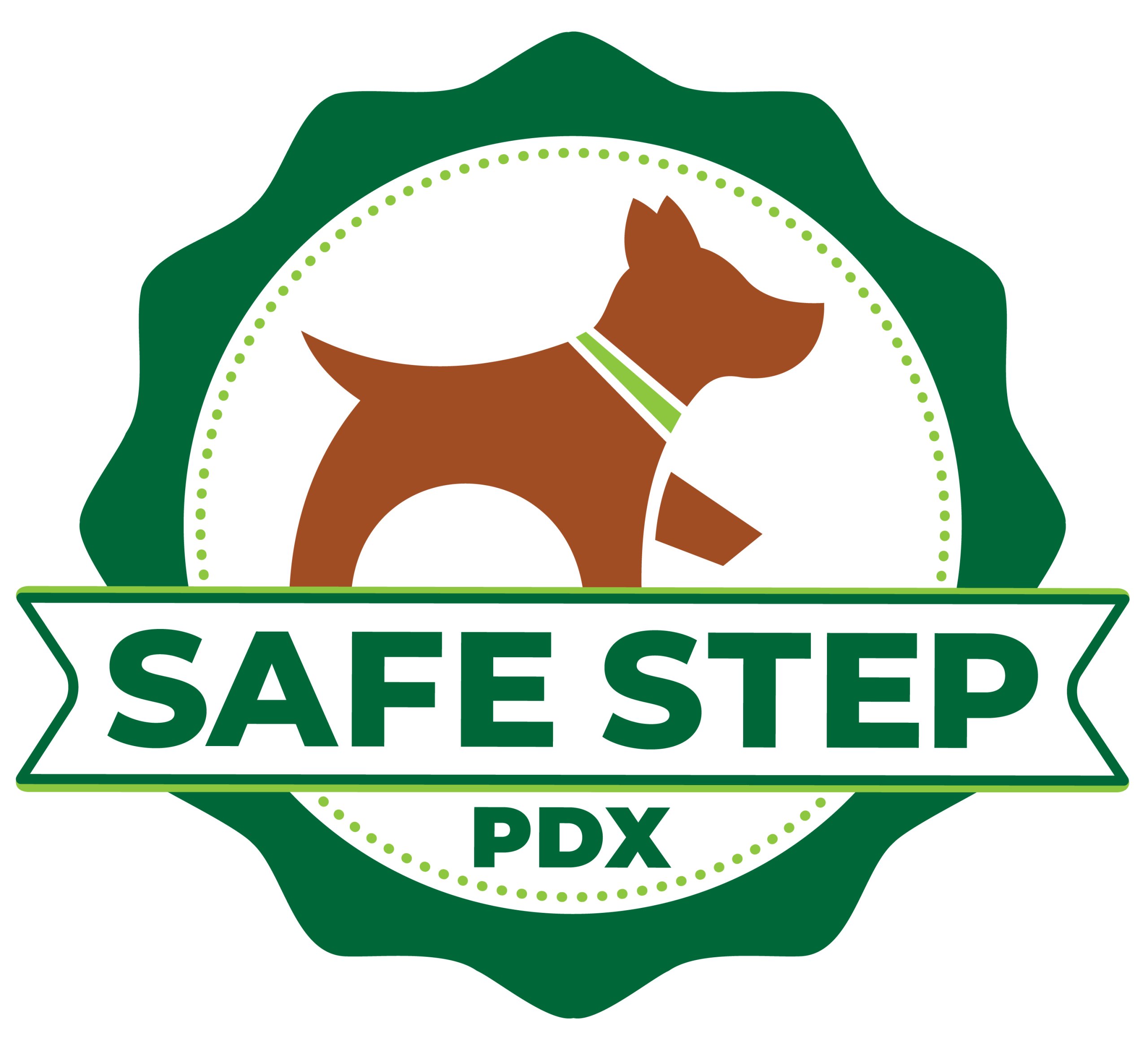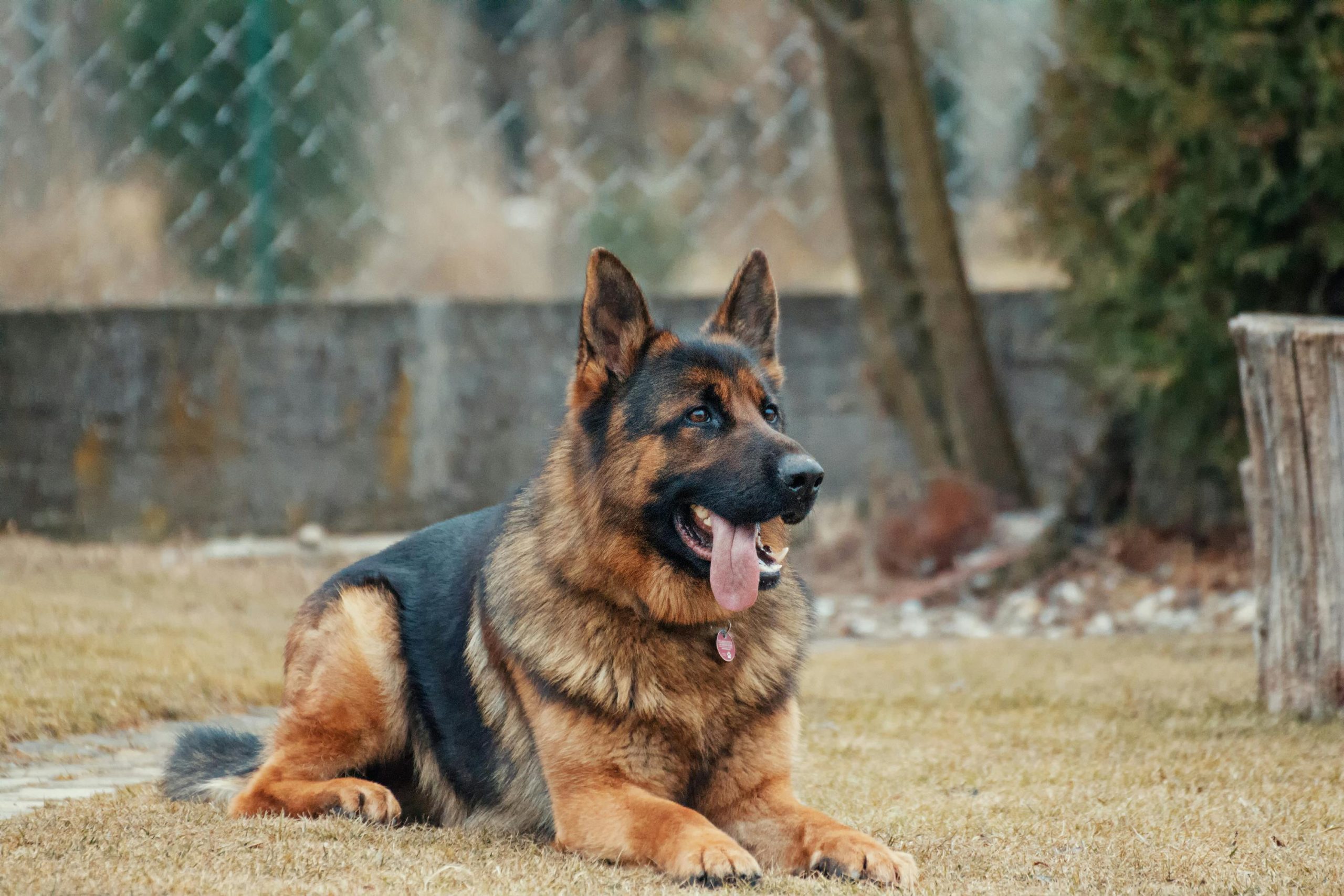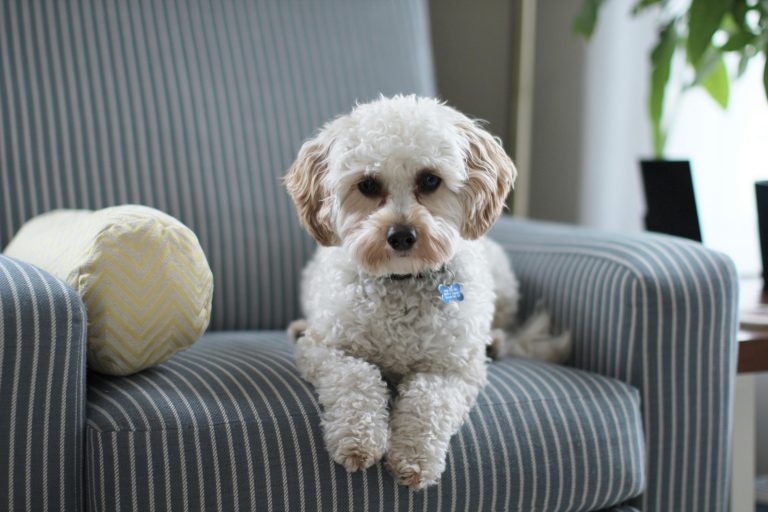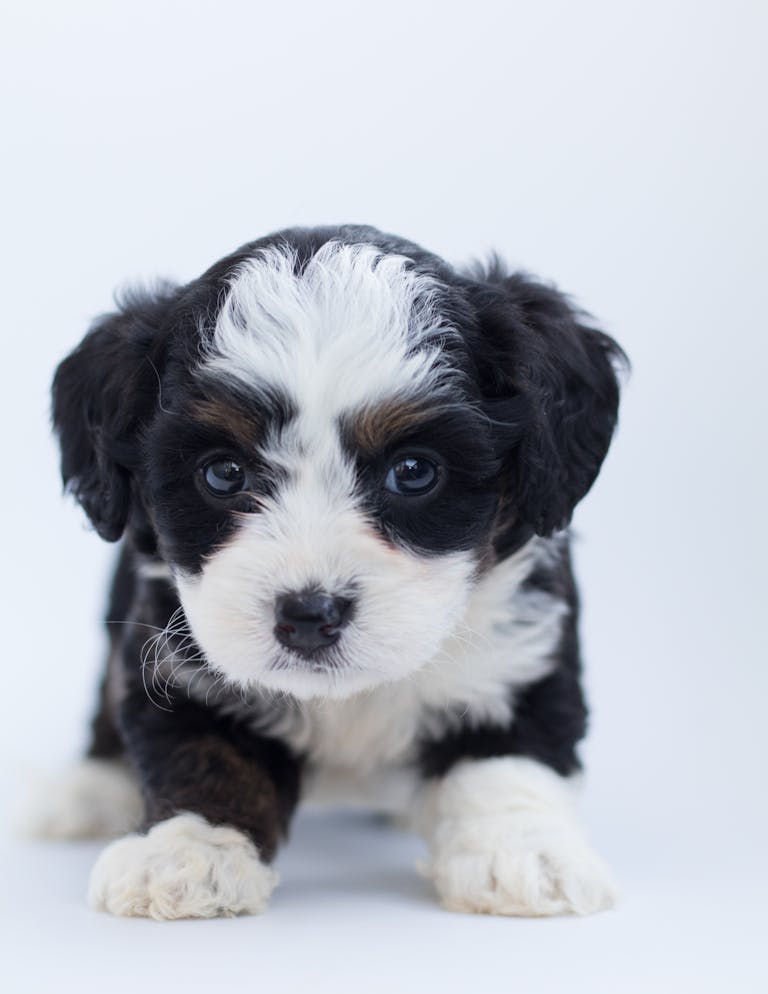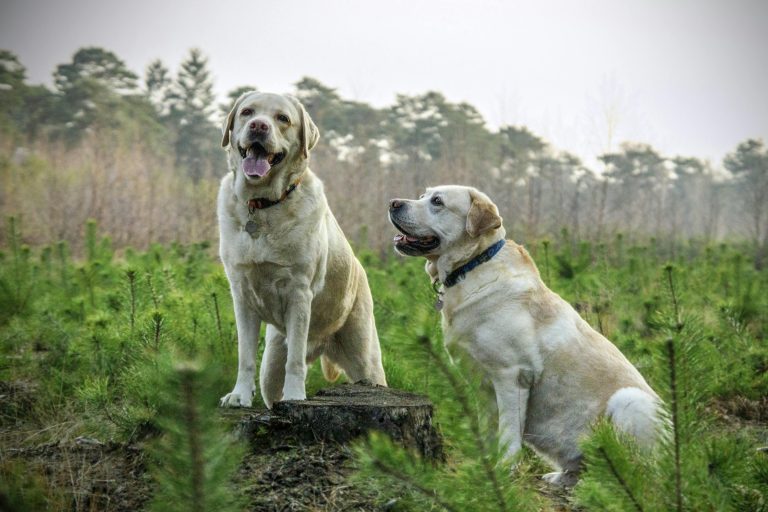Is Dog Poop Killing Your Lawn? What Portland Homeowners Need to Know
You love your dog. But you’re starting to notice something troubling: brown spots, dead patches, and struggling grass where your dog does their business.
You’re not imagining it. Dog poop is actively killing your lawn—and in Portland’s climate, it happens faster than you might expect.
As a pet waste removal service that’s restored hundreds of Portland lawns, we’ve seen the damage firsthand. The good news? Once you understand what’s happening, it’s completely preventable.
The Short Answer: Yes, Dog Poop Kills Grass
Dog waste doesn’t just sit harmlessly on your lawn. It actively damages and kills grass through multiple mechanisms:
- Chemical burn from excessive nitrogen
- Bacterial contamination of soil
- pH imbalance making grass unable to absorb nutrients
- Physical smothering preventing photosynthesis
- Secondary damage from Portland’s rain spreading the problem
Let’s break down exactly what’s happening in your yard.
Why Dog Poop is Toxic to Grass
The Nitrogen Overload Problem
Here’s the science: Dog urine and feces are extremely high in nitrogen. While grass needs nitrogen to grow, dog waste contains toxic levels that actually burn grass instead of feeding it.
Think of it like this:
- Lawn fertilizer: 20-30% nitrogen (beneficial)
- Dog waste: 400-500% concentrated nitrogen (toxic)
When dog waste sits on your lawn, it releases nitrogen faster than grass can process it. The result? Chemical burn—the same as if you dumped pure fertilizer in concentrated spots.
What you see:
- Dark green ring around the edge (grass getting “fed”)
- Dead, brown center (grass got “burned”)
- Pattern repeats wherever waste accumulates
Portland’s Rain Makes It Worse
In drier climates, dog waste dries out and the damage stays localized. But Portland’s frequent rain creates a different problem:
What happens when it rains:
- Rain breaks down the waste
- Nitrogen and bacteria dissolve into water
- Contaminated water spreads across larger areas
- More grass gets exposed to toxic levels
- Damage multiplies beyond the original waste site
The wet-dry cycle problem:
- Portland’s alternating rain and dry periods
- Repeated saturation and drying
- Each cycle spreads contamination further
- Grass never gets a chance to recover
This is why Portland dog owners see more extensive lawn damage than pet owners in places like Arizona or Southern California.
The pH Disaster
Healthy grass grows in soil with a pH of 6.0-7.0 (slightly acidic to neutral).
Dog waste is highly acidic (pH 5.0 or lower).
When waste sits on your lawn:
- Soil pH drops dramatically in that spot
- Grass roots can’t absorb nutrients (even if present)
- Beneficial soil microbes die off
- Grass starves and dies—even with fertilizer applied
Portland soil consideration: Our native soil tends to be slightly acidic already (thanks to rainfall and organic matter). Dog waste makes the problem significantly worse, pushing pH to levels where grass simply cannot survive.
Bacterial Contamination
Dog feces contains billions of bacteria. When this contaminates your soil:
Harmful effects:
- Beneficial soil bacteria get overwhelmed
- Nutrient cycling disrupts
- Root systems become vulnerable to disease
- Grass weakens and dies from root damage
The lingering problem: Even after you remove visible waste, bacteria remain in soil for weeks or months. That spot continues struggling to support healthy grass growth.
Physical Smothering
Fresh dog waste is dense and wet. When it sits on grass:
- Blocks sunlight (grass can’t photosynthesize)
- Traps moisture against grass blades (promotes fungal disease)
- Physically weighs down and crushes grass
- Creates anaerobic conditions (grass suffocates)
In Portland’s damp climate: Grass under waste stays wet longer, accelerating fungal problems and rot. What might take a week to kill grass in dry climates can happen in 2-3 days here.
The Visible Damage You’re Seeing
Brown Spots and Dead Patches
What’s happening:
- Direct chemical burn from nitrogen overload
- Grass dies from the roots up
- Soil pH becomes inhospitable
- Secondary grass around the edges struggles
Why it’s worse in some areas:
- Repeated use of the same spot
- Accumulation of multiple waste deposits
- Compacted soil from dog traffic
- Poor drainage keeping the area wetter longer
Dark Green Rings
What’s happening:
- Moderate nitrogen exposure (not toxic yet)
- Grass is being over-fertilized
- Creates unnaturally dark, lush growth
- Often surrounds a dead center spot
Why this matters: This dark green grass is stressed and vulnerable. It may look healthy now, but it’s more susceptible to:
- Disease
- Drought stress
- Winter damage
- Weed invasion
Thinning Grass
What’s happening:
- Repeated low-level exposure to contamination
- Grass isn’t dying immediately but is weakened
- Root systems are compromised
- Grass gradually thins out over time
The Portland problem: Our wet winters already stress grass. Add dog waste contamination, and grass can’t recover during growing season. Year after year, your lawn gets thinner.
Weeds Taking Over
What’s happening:
- Dog waste creates conditions grass hates
- Weeds LOVE disturbed, poor-quality soil
- Dandelions, clover, and crabgrass thrive
- They outcompete weakened grass
Why you see more weeds where dogs go: Many common lawn weeds actually prefer the soil conditions dog waste creates. As grass dies back, weeds fill the void aggressively.
Portland-Specific Lawn Damage Factors
1. Our Wet Climate Accelerates Damage
Why Portland lawns suffer more:
- 36-40 inches of rain annually
- Waste breakdown happens faster
- Contamination spreads further
- Grass has less time to recover between exposures
Comparison:
- Dry climate: Waste might sit for days/weeks before breaking down
- Portland: Rain within 24-48 hours starts the damage process
2. Our Grass Types Are Vulnerable
Common Portland lawn grasses:
- Perennial ryegrass (most common)
- Fine fescue
- Kentucky bluegrass blends
Why they struggle with dog waste:
- All prefer consistent moisture (not the flood-drought cycle waste creates)
- Sensitive to pH changes
- Don’t recover quickly from chemical burn
- Cool-season grasses (active growth in spring/fall, stressed in summer)
The summer damage compounding: Portland summers stress grass naturally (heat, less water). Add dog waste damage from winter/spring, and grass can’t recover. By fall, you’ve got significant dead areas.
3. Shade Compounds Problems
Many Portland yards have mature trees creating shade.
Shaded grass + dog waste = disaster:
- Shaded grass is already stressed (less photosynthesis)
- Dog waste adds additional stress
- Grass can’t recover with limited sunlight
- Moss takes over (moss LOVES acidic, disturbed soil)
4. Drainage Issues
Portland soil often has clay content or poor drainage.
Poor drainage + dog waste:
- Waste sits in puddles longer
- Contamination doesn’t drain away
- Creates persistently wet, toxic conditions
- Grass roots literally rot
How Much Damage Are We Talking?
Let’s quantify the impact of unmanaged pet waste:
One dog, average size (50 lbs):
- Produces ~¾ pound of waste daily
- That’s 5+ pounds per week
- Over 275 pounds per year
If waste sits on lawn for 7 days before cleanup:
- Each pile creates 6-12 inch diameter damage zone
- 7 piles per week = 7 damage zones
- 365 piles per year = 365+ damage zones
- Total affected area: 100-300+ square feet annually
For a 5,000 sq ft lawn: That’s 2-6% of your entire lawn damaged or killed every year.
Two dogs: Double the damage. 4-12% of lawn area affected annually.
Over 5 years with no intervention: You could lose 10-30% of your lawn to permanent damage, requiring complete renovation.
The Hidden Costs of Lawn Damage
Reseeding and Repair
Cost to repair dog-damaged lawn:
- Spot seeding: $0.50-1.50 per sq ft
- Professional overseeding: $500-1,500 (5,000 sq ft lawn)
- Complete lawn renovation: $2,000-5,000+
The frustration: You reseed, grass grows, dog continues using yard, damage returns. Without addressing the root cause (pun intended), you’re on an expensive treadmill.
Reduced Property Value
Real estate impact:
- Buyers notice damaged lawns immediately
- Brown, patchy yards reduce curb appeal
- Can decrease home value by $5,000-15,000
- Homes with poor yards sit on market longer
Portland’s competitive housing market: With multiple offers common, a damaged lawn can be the difference between full-price offers and negotiations for repair credits.
Increased Maintenance Costs
Damaged lawn requires more:
- Extra fertilizer (trying to compensate)
- More frequent watering
- Weed control treatments
- Fungicide applications
- Aeration and dethatching
- Lime applications to adjust pH
Annual cost increase: $500-1,500 in additional lawn care
Lost Enjoyment
This isn’t quantifiable, but it’s real:
- Embarrassment when guests visit
- Kids can’t play on damaged areas
- Entertaining outdoors becomes stressful
- Your investment in your home feels wasted
Can Damaged Grass Recover?
Good news: Yes, grass CAN recover—if you act quickly.
Timeline for recovery:
Minor damage (caught within 24-48 hours):
- Remove waste immediately
- Water the area heavily to dilute nitrogen
- Grass may recover in 2-3 weeks
- Some discoloration may persist
Moderate damage (waste sat for 3-7 days):
- Grass may be dead but roots survive
- Heavy watering, lime application to adjust pH
- Recovery possible in 4-8 weeks
- May need overseeding
Severe damage (waste sat for weeks, repeated exposure):
- Grass and roots are dead
- Soil is contaminated
- Requires complete renovation:
- Remove dead grass
- Amend soil (add lime, compost)
- Reseed or sod
- 8-12 weeks for new grass establishment
Permanent damage (years of accumulation):
- Soil structure is compromised
- May need to remove contaminated soil
- Professional lawn renovation required
- 6-12 months for full recovery
How to Protect Your Portland Lawn
Immediate Actions (If You’re Doing It Yourself)
1. Daily pickup is best The less time waste sits, the less damage occurs.
2. Deep watering after cleanup
- Dilutes residual nitrogen
- Helps flush contamination deeper into soil
- Reduces surface damage
3. Apply lime seasonally
- Counteracts acidic pH from waste
- Portland lawns benefit from lime anyway
- Apply in spring and fall
4. Overseed damaged areas promptly
- Don’t wait for damage to spread
- Spring and fall are best for seeding in Portland
- Use high-quality grass seed suited to our climate
5. Designate a “bathroom area”
- Train dogs to use one section of yard
- Sacrifice that area, protect the rest
- Use mulch or gravel in the designated zone
- Easier to manage concentrated waste
Long-Term Solutions
Professional Pet Waste Removal: This is where the math becomes obvious.
Weekly professional service:
- Waste never sits longer than 7 days
- Damage is minimized
- Lawn has time to recover between cleanups
- Professional sanitation reduces bacterial contamination
Bi-weekly service (2x/week):
- Waste sits maximum 3-4 days
- Significantly less damage
- Ideal for multiple dogs or small yards
- Grass stays healthier year-round
Cost-benefit analysis:
- Professional service: ~$1,500/year (weekly)
- Lawn repair from damage: $500-5,000/year
- Property value protection: $5,000-15,000
- The math is obvious
Lawn Care Best Practices for Dog Owners
1. Choose resilient grass varieties When reseeding, consider:
- Tall fescue (more drought and wear tolerant)
- Perennial ryegrass blends
- Avoid delicate fine fescues in high-traffic areas
2. Maintain healthy grass Healthy grass resists damage better:
- Proper watering (1 inch per week)
- Regular fertilization (but not over-fertilization)
- Mowing at proper height (3-4 inches in Portland)
- Annual aeration
3. Improve drainage
- Add compost to improve soil structure
- Consider French drains in problem areas
- Aerate compacted areas annually
4. Apply gypsum seasonally
- Helps improve soil structure in clay soils
- Aids in flushing excess salts (from urine)
- Doesn’t change pH (unlike lime)
- Apply spring and fall
5. Monitor and act quickly
- Inspect yard weekly for new damage
- Address problems immediately
- Don’t let damage accumulate
What About Dog Urine?
We’ve focused on feces, but urine causes significant damage too.
Why urine is problematic:
- Even higher nitrogen concentration than feces
- Large volume (spreads over wider area)
- Female dogs (squatting) create larger spots
- Male dogs (marking) create numerous small spots
Urine damage prevention:
- Water immediately after dog urinates (if possible)
- Train dogs to use designated area
- Consider dietary supplements (Dog Rocks, etc. – consult vet)
- Accept that some urine damage is inevitable with outdoor dogs
The good news: Professional waste removal handles the feces problem. Combined with quick watering of urine spots, you can dramatically reduce total lawn damage.
Myths About Dog Waste and Lawns
Myth #1: “It’s natural fertilizer”
Reality: Dog waste is NOT like wild animal waste or compost. It contains:
- Processed pet food byproducts
- Medications and chemicals
- Excessive nitrogen and acids
- Harmful bacteria
Wild animal waste comes from herbivores eating natural diets. Dog waste is entirely different.
Myth #2: “Rain will wash it away”
Reality: Rain makes the problem worse by:
- Breaking down waste and spreading contamination
- Washing bacteria and acids into larger areas
- Creating repeated wet-dry cycles that stress grass
- Never fully “washing away” the damage
Myth #3: “My lawn is fine, I don’t see damage”
Reality: Damage is cumulative. You might not notice for months or years, but it’s happening. By the time damage is obvious, significant lawn renovation is needed.
Myth #4: “I pick it up weekly, that’s enough”
Reality: In Portland’s wet climate, 7 days is plenty of time for serious damage. Twice-weekly pickup (or more) is ideal for preventing damage.
Myth #5: “Grass grows back on its own”
Reality: Dead grass doesn’t magically recover. Contaminated soil inhibits regrowth. Active intervention (seeding, soil amendment) is required.
When to Call a Professional
Signs you need help:
🚨 Significant visible damage (10%+ of lawn affected)
🚨 Spending 30+ minutes per cleanup (waste volume is overwhelming)
🚨 Lawn repair costs exceeding $500/year
🚨 Multiple dogs (DIY becomes unsustainable)
🚨 You’re avoiding cleanup (damage is accumulating)
🚨 Guests comment on lawn condition (affecting property enjoyment)
Professional pet waste removal provides:
- Consistent, reliable cleanup schedule
- Minimal waste-to-grass contact time
- Professional sanitation standards
- Lawn protection and property value preservation
- Freedom to enjoy your yard
Real Portland Success Stories
The Martins – Beaverton (2 Labs) “We spent over $2,000 reseeding our lawn three times in two years. Nothing worked—the dogs kept destroying it. Six months after starting weekly SafeStep service, our lawn is finally recovering. We should have done this from day one.”
The Petersons – Lake Oswego (1 German Shepherd) “I thought I was saving money doing it myself. When I calculated lawn repair costs ($800 last year alone), professional service was actually cheaper. Plus, our yard finally looks good again.”
The Chens – Hillsboro (3 dogs) “With three dogs, our small yard was a disaster. Brown patches everywhere, constant smell. Bi-weekly service changed everything. Grass is actually green again. Worth every penny.”
Portland’s Environmental Responsibility
Protecting your lawn isn’t just about aesthetics—it’s about environmental stewardship.
Why proper waste management matters:
- Prevents storm drain contamination
- Protects Willamette River and local waterways
- Reduces bacteria in runoff
- Maintains healthy urban ecosystem
- Complies with Portland environmental regulations
Portland City Code: Failing to properly dispose of pet waste can result in fines. More importantly, it’s about being a responsible neighbor and protecting our beautiful Pacific Northwest environment.
The Bottom Line
Yes, dog poop is killing your lawn. But it doesn’t have to.
The damage is: ✓ Preventable with proper management
✓ Reversible if caught early
✓ Avoidable with professional help
Your choices:
- Do nothing → Lawn continues deteriorating, repair costs escalate
- DIY daily cleanup → Manageable if you’re disciplined, time-intensive
- Professional service → Most effective, protects investment, saves time
For most Portland homeowners with dogs, professional pet waste removal isn’t a luxury—it’s a lawn care essential.
Protect Your Lawn Investment Today
Don’t wait until damage is severe. Prevention is always cheaper than repair.
SafeStep PDX offers:
- Weekly or bi-weekly service (your choice)
- 100% waste removal guarantee
- Professional sanitation standards
- Rain-or-shine reliability
- Lawn protection focus
Get your first cleanup FREE—see the difference professional service makes.
Serving Portland Metro: Beaverton • Hillsboro • Tigard • Lake Oswego • West Linn • Milwaukie • Oak Grove • Oregon City • Tualatin • Sherwood • Forest Grove
Call or text: (503) 330-3848
Related Articles:
- How Often Should You Clean Dog Poop From Your Yard?
- Is Dog Poop Dangerous? Health Risks Every Portland Family Should Know
- Portland Dog Owner’s Guide to Lawn Care
SafeStep PDX is Portland’s trusted family-owned pet waste removal service. We help Portland homeowners protect their lawn investment while enjoying the benefits of dog ownership.
